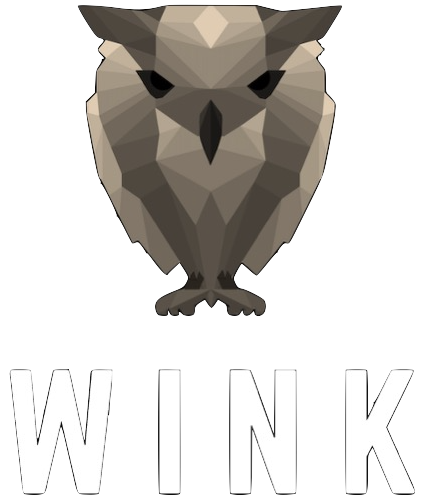#143 - New Study on Light from Phones, iPads and PCs: Study Breakdown.
LinkedIn is a great place to learn, and recently my scrolling stopped on a post from “The Light Lady”.
But it was actually a comment from someone else that caught my eye.
Dr Oliver Stefani.
When we were designing the world’s 1st study in 2012, which tested the effects of the blue light emitted from screens on sleep, we were pilfering some tid-bits from an awesome study led by Prof Christian Cajochen the previous year.
We reached out to Prof Cajochen to find out more details. He answered (which is always a lovely thing to receive), and referred us to Dr Stefani - who was likewise very helpful.
To cut a long story short, I’ll assume you know that we found it took a huuuuuuuuge few minutes longer to fall asleep from a bright screen (compared to a completely dim screen).
We published this study in 2014.
Here’s our obligatory-poster-iPad-girl, Melanie Heath (aka, Heath et al., 2014, Chronobiology International). Who also happened to submit her PhD this month!
Since then, the number of studies that have found strikingly similar results is creeping into the double digits.
This means we can feel more confident that using a bright screen in the hour before bed (or longer), does not mean you will have difficulty falling asleep.
And this week, there was a very well-executed study to add to the growing number of studies.
BUT …
Upon reading the study’s title and abstract, I became confused.
The main sleep variable mentioned is ‘sleep latency’ (aka, how long it takes to fall asleep).
Then in the abstract, the researchers state “Low melanopic light shortens the time to fall asleep …” and “we observe dose-dependent increases in sleep latency,”
Now these are the same researchers who led the field in 2011 - testing the effects of bright screens (albeit, they didn’t measure sleep).
They know how to conduct great research.
Yet this is a result that I have not seen elsewhere.
Usually when I begin reading these studies, I can guess what the result will be beforehand. I’m like Dustin Hoffman’s Rainman character who counts cards in a casino ...
As much as I’ve been told throughout my life that I look like the guy on the right, I think I’m more like the guy on the left.
But when I got to the Results of this study, the amount of minutes it took people to fall asleep were not displayed.
SFW?
If you dig deeper, there is a link to a different document where you can find out the sleep latencies for when people used either a phone, tablet or computer screen.
And in this document, I realised I was still the Rainman of screenlight-and-sleep studies. That’s because the data fit what I had seen before.
As you cast your eyes across all these values, search for the lowest amount of minutes and the highest.
It can take a while to process all the info in a Table, so above is one I prepared earlier.
What’s the difference … in minutes?
Then there was a phrase at the bottom of this table that I checked. It said …
”mean for the reverse-transformed sleep latency”.
If you don’t know what this means then I know you’ve been spared from the pain of statistics.
When crunching data, some analyses like their data to be clean.
Sort of like how some people wash their apples after buying them from the supermarket.
But some people don’t care about this. They spit on their apple, rub it up and down on their clothes until it’s shiny, and then eat it.
Or am I the only one who does this?
Getting back on track - the data that gets collected has a formula applied to it, and then it becomes clean at the other end. This is the standard way things should be done.
Nevertheless, I wished to know what were the actual values that were recorded before the apple was cleaned …
Once again - Dr Oliver Stefani was gracious enough to reply to my request. However, this time, he did the referring. Onto Isabel Schöllhorn - the lead author of this excellent study.
Isabel kindly went to her office computer, grabbed the uncleaned data, and sent it my way!
These data were sent to me in trust, so I won’t share them. But what I will share is the difference between the quickest time to fall asleep - and the longest time to fall asleep … to our WINK Members …
Conclusions?
One of my biggest concerns is that people will read the title and/or abstract of this excellent study and then go and post something like “Bright screens make it harder to fall asleep”.
Now this is true if you are one of the most studied research participants in sleep research.
If you’re a fly, then you do need those extra few minutes of falling asleep faster considering you may not live to see you 100th … day.
But for the other most studied research participants in sleep research - American College Students - I’m guessing you don’t give a rat’s ass if it takes you a few minutes longer to fall asleep after watching the finale of Succession (don’t click on that link unless you want a spolier!)
But in my experience, over the past decade, what is concerning are the copycatters.
Those who blindly read what someone else said - and posts it.
The ratio of thinkers to copycatters is surely 1 : 2 fuckin much!
Speaking of 1: 2: 3 …
Christian is a Thinker …
And seriously?
Are we now advising that it’s OK to work after dinner?
Prof MG
p.s. Did I say this was an excellent study? Because it would’ve been seriously hard to do, so Kudos to Isabel and the team!










